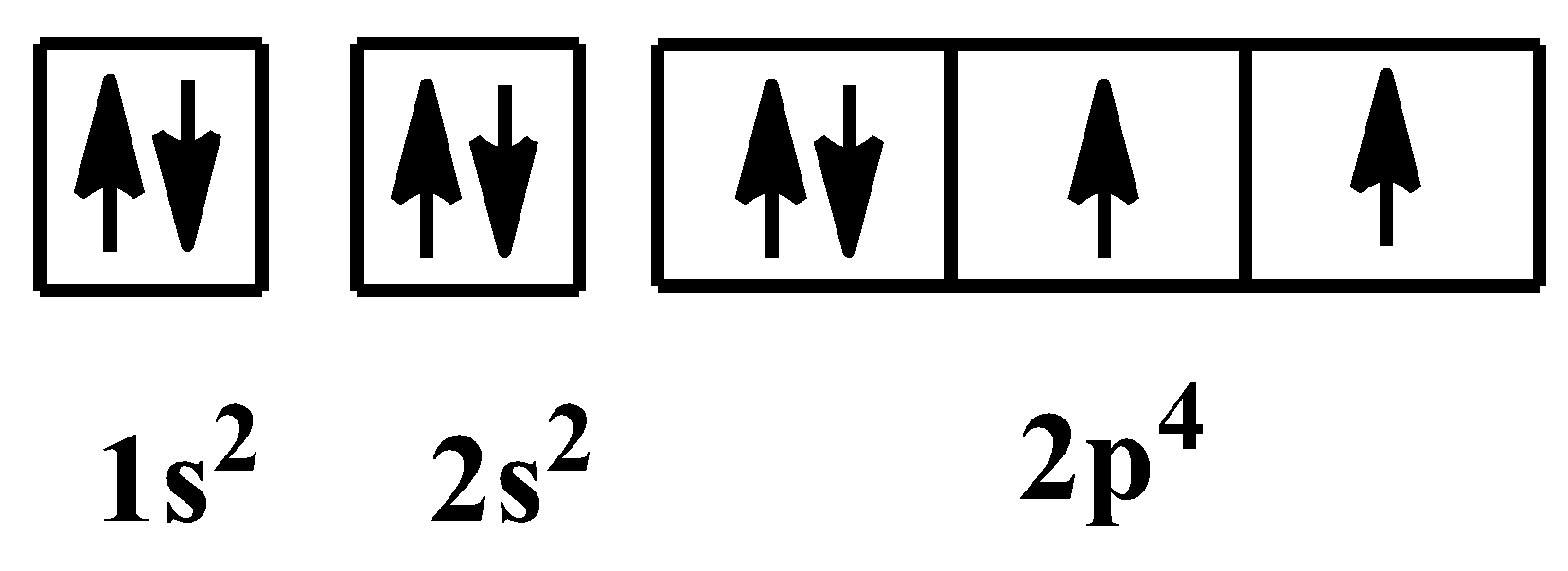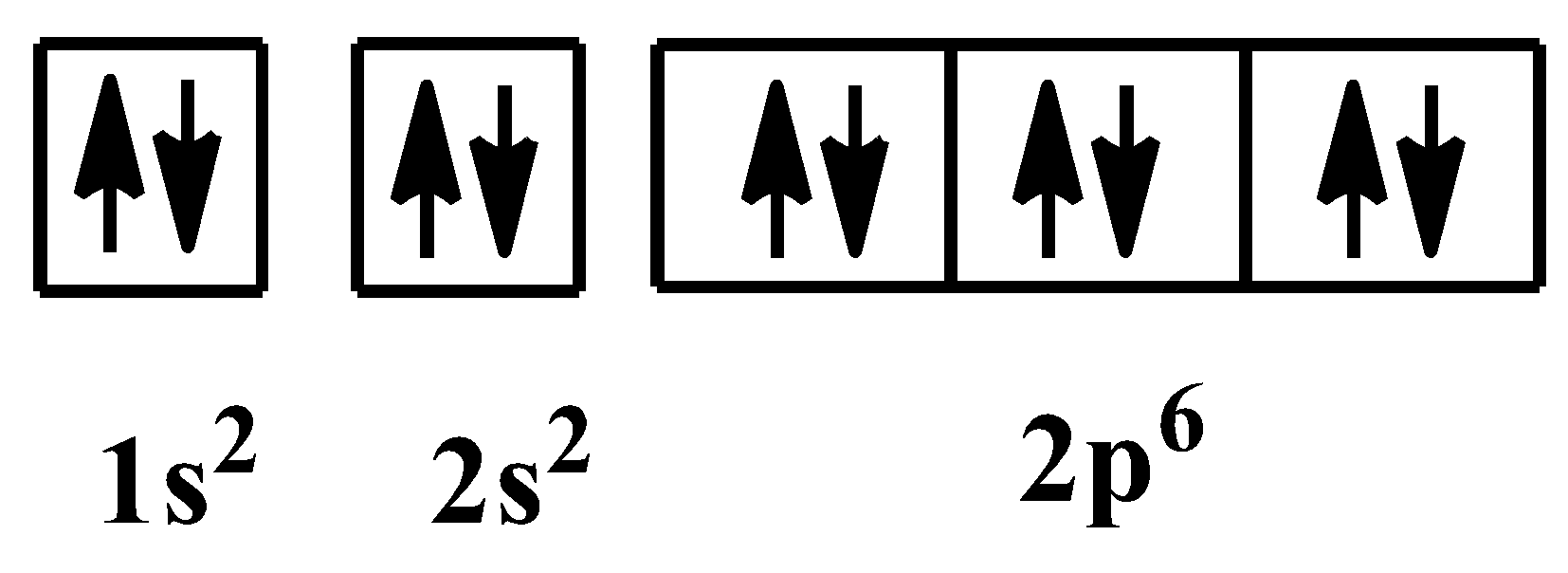
What is the electronic configuration of ${{O}^{2-}}$ ion?
Answer
586.5k+ views
Hint: Write the electronic configuration of oxygen atom in its neutral state. Then add two electrons to the outermost orbital of the configuration.
Complete answer:
For writing the electronic configuration of any element, we have to know its atomic number. The atomic number of an element is the number of protons present inside the nucleus of its atom or the number of electrons present inside a neutral atom of that element.
On the periodic table, the element oxygen occupies the position at the crossing of the second period and sixteenth group. The atomic number of oxygen is “$8$”. So, its electronic configuration is as below:
\[1{{s}^{2}}2{{s}^{2}}2{{p}^{4}}\]
The orbital arrangement of electrons for the above configuration is shown below:

As you can see, there are two unpaired electrons in the valence subshell of the oxygen element. In${{O}^{2-}}$ion, there are two extra electrons which means, the unpaired electrons are paired now. So the electronic configuration becomes:
\[1{{s}^{2}}2{{s}^{2}}2{{p}^{6}}\]
This is the electronic configuration of neon, which is a noble gas. The orbital arrangement for the above configuration is as shown below:

Additional Information:
- Oxygen is the second most electronegative element in the periodic table after fluorine.
- The oxygen element is relatively stable in its anionic state than other elements because of its higher electronegativity and small size.
- The small size of oxygen is due to its position in the periodic table. As you know, the size of an atom increases as we go down the group and across a period.
Note: Fluorine is more stable than oxygen in its anionic state because it is the most electronegative element in the whole periodic table.
Even if more electronegative elements are quite stable in their anionic forms, they cannot exist for much time if they are not supported by external agents. An example of such an external agent is water. The water molecules dissociate and surround these anions to stabilise the excess negative charge.
Complete answer:
For writing the electronic configuration of any element, we have to know its atomic number. The atomic number of an element is the number of protons present inside the nucleus of its atom or the number of electrons present inside a neutral atom of that element.
On the periodic table, the element oxygen occupies the position at the crossing of the second period and sixteenth group. The atomic number of oxygen is “$8$”. So, its electronic configuration is as below:
\[1{{s}^{2}}2{{s}^{2}}2{{p}^{4}}\]
The orbital arrangement of electrons for the above configuration is shown below:

As you can see, there are two unpaired electrons in the valence subshell of the oxygen element. In${{O}^{2-}}$ion, there are two extra electrons which means, the unpaired electrons are paired now. So the electronic configuration becomes:
\[1{{s}^{2}}2{{s}^{2}}2{{p}^{6}}\]
This is the electronic configuration of neon, which is a noble gas. The orbital arrangement for the above configuration is as shown below:

Additional Information:
- Oxygen is the second most electronegative element in the periodic table after fluorine.
- The oxygen element is relatively stable in its anionic state than other elements because of its higher electronegativity and small size.
- The small size of oxygen is due to its position in the periodic table. As you know, the size of an atom increases as we go down the group and across a period.
Note: Fluorine is more stable than oxygen in its anionic state because it is the most electronegative element in the whole periodic table.
Even if more electronegative elements are quite stable in their anionic forms, they cannot exist for much time if they are not supported by external agents. An example of such an external agent is water. The water molecules dissociate and surround these anions to stabilise the excess negative charge.
Recently Updated Pages
The number of solutions in x in 02pi for which sqrt class 12 maths CBSE

Write any two methods of preparation of phenol Give class 12 chemistry CBSE

Differentiate between action potential and resting class 12 biology CBSE

Two plane mirrors arranged at right angles to each class 12 physics CBSE

Which of the following molecules is are chiral A I class 12 chemistry CBSE

Name different types of neurons and give one function class 12 biology CBSE

Trending doubts
One Metric ton is equal to kg A 10000 B 1000 C 100 class 11 physics CBSE

Explain zero factorial class 11 maths CBSE

What is 1s 2s 2p 3s 3p class 11 chemistry CBSE

Discuss the various forms of bacteria class 11 biology CBSE

State the laws of reflection of light

Difference Between Prokaryotic Cells and Eukaryotic Cells




